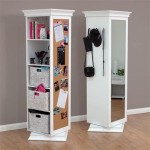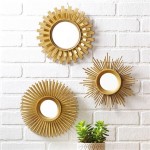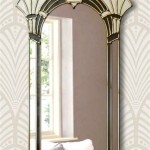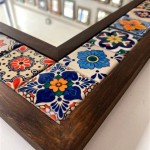Attaching a Mirror to a Sliding Closet Door
Sliding closet doors offer a space-saving solution for bedrooms and other areas where hinged doors might prove cumbersome. However, their smooth surfaces can also present a challenge when considering the addition of a mirror. This article provides a comprehensive guide to attaching a mirror to a sliding closet door, outlining the necessary materials, preparation steps, and installation techniques.
Assessing the Door and Mirror
Before embarking on this project, careful assessment of both the sliding closet door and the mirror is critical. The door's material, whether wood, metal, or composite, will dictate the appropriate adhesives and fasteners. Measuring the door's dimensions, specifically the available space for the mirror, ensures a proper fit. Equally important is determining the mirror's weight and dimensions. Heavier mirrors will require more robust mounting solutions. Users should always prioritize safety when working with glass, wearing appropriate protective gear such as gloves and safety glasses.
Gathering Necessary Materials and Tools
Assembling the required materials and tools beforehand streamlines the installation process. Essential tools include a measuring tape, level, drill (with appropriate drill bits for the door material), and a screwdriver. Depending on the chosen mounting method, additional tools may be required. Materials typically include the chosen adhesive (mirror mastic, construction adhesive, or double-sided mounting tape), optional mechanical fasteners (e.g., mirror clips, J-channels), and cleaning supplies for both the door and the mirror.
Preparing the Door Surface
A clean and properly prepared door surface is paramount for successful mirror adhesion. Thoroughly clean the area where the mirror will be placed, removing any dust, grease, or debris. For wooden doors, lightly sanding the surface can improve adhesion. If the door's surface is uneven, consider using shims to create a flat plane for the mirror, preventing stress cracks and ensuring uniform contact with the adhesive.
Choosing the Right Mounting Method
Selecting the appropriate mounting method depends on several factors, including the mirror's weight, the door's material, and personal preference. Several options are available:
Using Mirror Mastic or Construction Adhesive
Mirror mastic is a specialized adhesive designed for bonding mirrors to various surfaces. Construction adhesive also provides a strong bond but may not be suitable for all mirror types. When using adhesives, apply them in a consistent pattern, such as vertical lines or a grid, to ensure even distribution and prevent air pockets. Support the mirror adequately while the adhesive cures, following the manufacturer's recommended drying time.
Utilizing Mirror Clips and J-Channels
Mirror clips and J-channels offer a mechanical mounting solution, particularly useful for heavier mirrors. J-channels are installed along the edges of the mirror's designated area, providing a secure frame. Mirror clips then secure the mirror within the channels. This method also allows for minor adjustments during installation and easier removal if needed.
Employing Double-Sided Mounting Tape
For lighter mirrors, double-sided mounting tape can provide a convenient and less permanent solution. Ensure the tape is specifically designed for mirrors and can support the mirror's weight. Clean the surfaces thoroughly before applying the tape to maximize adhesion.
Installing the Mirror
Regardless of the chosen mounting method, careful execution during the installation process is crucial. With the door surface prepared and the chosen adhesive applied (or clips and channels installed), carefully position the mirror onto the door, ensuring proper alignment. Use a level to verify the mirror's vertical and horizontal orientation. If using adhesive, apply even pressure across the mirror's surface to ensure a secure bond. With clips and channels, secure the clips according to the manufacturer's instructions.
Adding Finishing Touches (Optional)
Once the mirror is securely attached and the adhesive has cured (if applicable), consider adding finishing touches. Decorative molding or trim can conceal the edges of the mirror and enhance its aesthetic appeal. These additions can also provide extra security and prevent accidental contact with the mirror's edges.
Regular Maintenance and Inspection
Periodically inspect the mirror and its mounting to ensure its stability. Check for any signs of loosening or damage. Clean the mirror regularly using appropriate glass cleaner and avoid abrasive materials that could scratch the surface.

Sliding Mirror Closet Doors All You Need To Know

20 Diy Closet Mirror Door Makeover Angela Rose Home

20 Mirror Closet And Wardrobe Doors Ideas Shelterness

Sliding Closet Door Makeover With Paint Tape Making Maanita

18 Amazing Mirror Closet Door Ideas Bedroom Doors

Sliding Closet Door Makeover With Paint Tape Making Maanita

Mirrored Closet Door Makeover

Diy Barn Door With Mirror Field Court

How To Update Mirrored Closet Doors The Good Bad And Ugly

How To Cover Closet Door Mirrors Easily








